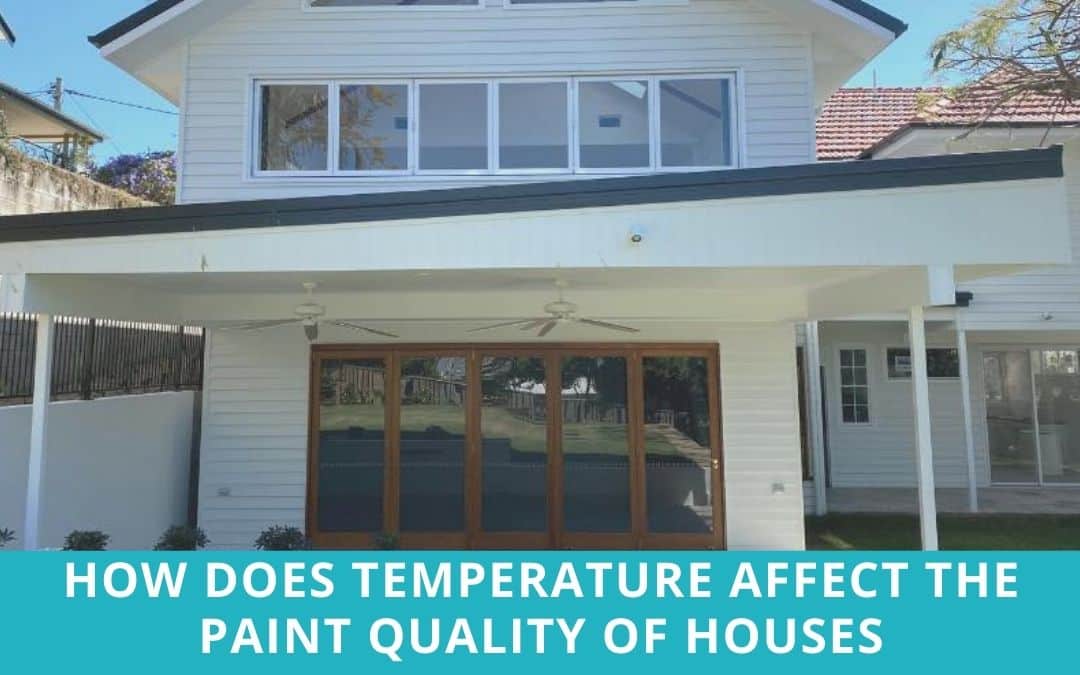Our Blogs
Paint is one of the most important elements of any home renovation or construction project. It provides insulation, protects surfaces, and adds aesthetic appeal. But what many people don’t know is that the temperature can have a significant impact on paint longevity.

In this post, we’ll take a look at how temperature affects paint and some tips for getting the best results.
The temperature affects the longevity of paint
If you’re a homeowner, property owner or building owner in Australia, then you’ll be interested to know that the temperature can truly affect the longevity of paint. The hotter it gets, the more likely it is that the paint will peel and chip. It can even affect how well paint sticks to a surface.
Warmer temperatures can make it difficult for paints and coatings to adhere properly, which is why you’ll often see painting projects scheduled for cooler times of the year. So if you’re planning on painting your house or building, it’s important to keep this in mind. You may need to adjust your plans depending on what time of year it is.
Paint can be thinned or thickened to accommodate different temperatures
While some paints are manufactured to be used at a certain consistency, others can be thinned or thickened to better suit the temperature. In some cases, this might mean using thicker paint in winter to keep the warmth in, and thinner paint in summer to help facilitate cooling.
Alternatively, if you’re experiencing a particularly cold spell and your paint is too thick for the weather, you can add a little water to thin it out. However, do so sparingly to avoid diluting your paint. This can ensure that your paint will stay in place and keep your home looking its best, no matter what the temperature is outside.
Temperature changes will affect drying time
Drying time is an important factor when finishing a painting project. As the weather warms up, it’s important to keep in mind that temperature changes will affect drying time. In winter, it takes longer for water to evaporate because the air is colder, while in summer the hotter temperatures can cause water to evaporate more quickly.
This means that warmer weather means that your paint job will dry quicker, while colder weather can increase the drying time. So if you’re planning on painting or re-painting your house this spring, make sure you account for these variations by starting earlier in the colder months or later in the warmer months.
By understanding how temperature affects the drying process, you can plan your work schedule accordingly. This will ensure that you’ll avoid any unwanted delays and ensure a smooth process from start to finish. Temperature changes will always have some kind of effect on drying time; sometimes you just have to be prepared for it.
With careful planning, you can work through any obstacles posed by the weather and still achieve success.
Consider the effects of different temperatures on your brand choice and choose accordingly
If you’re considering painting your house, there are a few things you need to take into account, including the paint’s ability to withstand different temperatures. No matter how much you may love a particular paint brand, if it’s not the right one for the climate where your home is located, it may not be the best choice.
Think about the different effects that temperature can have on the paint. Paints with a higher gloss will reflect more sunlight and heat than those with a lower gloss, so if you’re living in an area that experiences high temperatures during summer, then you may want to opt for a less reflective paint brands.
Similarly, darker colours will absorb more heat than lighter shades, so they may not be the best choice for warmer climates. By choosing the right paint colour for your home’s climate, you can help keep things cool during summer and reduce energy costs.
In cold weather areas, use a top coat and undercoat
If you’re Australian, then you know how hot it can get down under during the summer. But what a lot of people don’t know is that Australia can get pretty cold in the winter too. In some parts of the country, temperatures can drop below freezing.
If you’re not prepared for the cold weather, your home or property could suffer from a range of problems like cracking and fading paint. You can easily solve this by using a top coat as well as an undercoat paint system. These will help protect your walls from cracking and fading from extreme cold.
Make sure you select the right paints for the job and follow all the instructions on the can. With a little bit of extra work, you can keep your home looking great even with the coldest winter temperatures.
In hot weather areas, avoid dark colours
Dark coloured paint absorbs heat, while light coloured paint reflects it. So in summer, light colours are the way to go. In Australia, we experience a lot of hot weather. As a result, it’s important to think about the colours you choose for your home or building.
Did you know that the colour of your house can affect how hot it is inside? In areas with lots of hot weather, avoid dark colours because they absorb heat. Light colours reflect it instead, so they’re a better choice in summer.
Need a professional to help you?
Talk us. We’d love to guide you in choosing the right paint for your property and the temperature in your area.
